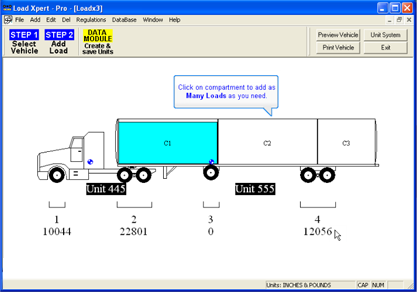
The stated capacity of a forklift only applies to the load center indicated on the data plate.

OSHA addresses load stability in Appendix A of the Powered Industrial Trucks Standard. The distance is always measured perpendicular to the line of action. With forklifts, the distance is measured from the point at which the truck will tip over to the object’s line of action. Moment – The product of the object’s weight times the distance from a fixed point (usually the fulcrum).Longitudinal stability – The truck’s resistance to overturning forward or rearward.Load center – The horizontal distance from the load’s edge to the line of action through the load’s center of gravity.Line of Action – An imaginary vertical line through an object’s center of gravity.Lateral stability – A truck’s resistance to overturning sideways.Fulcrum – The forklift’s axis of rotation when it tips over.For symmetrical loads, the center of gravity is at the middle of the load.



 0 kommentar(er)
0 kommentar(er)
